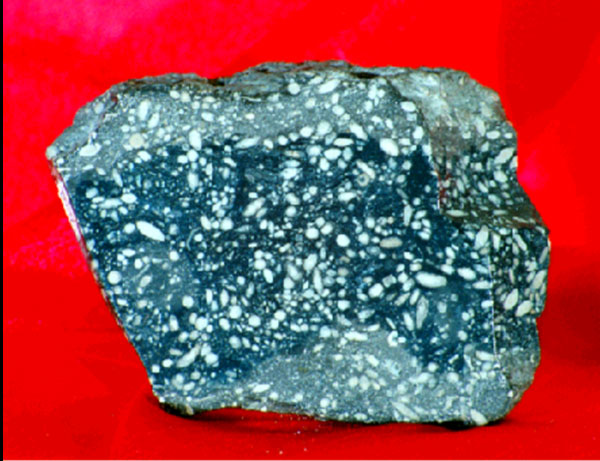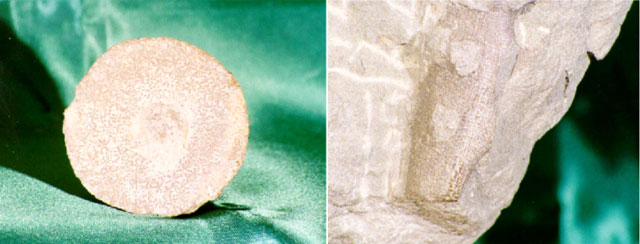
Invertebrate Animals (Part 1)
Invertebrate animals are those that do not have backbones. Fossils of these organisms make up much of the fossil record.
Common invertebrate fossils include: protozoans, porifera, corals, bryozoans, brachiopods, mollusks, echinoderms, arthropods, archaeocyatha, conodonts, and graptolites.
Protozoans
Protozoans are single-celled, mainly aquatic organisms. Some build calcareous (calcite-rich) or siliceous (silica-rich) shells called tests. The protozoan shown here is common in late Paleozoic rocks.

Protozoans (Photograph by Parvinder Sethi)
Porifera
Porifera, commonly known as sponges, are multicellular aquatic animals. Some have hard parts, called spicules, composed of calcium carbonate or silica. Sponges have existed since the late Precambrian.

Poriferas - sponges (Photographs by Parvinder Sethi)
Corals
Corals belong to the classification "Coelenterata". These aquatic organisms can be solitary or colonial. Corals are extremely abundant in marine limestones and shales. True corals have existed since the Ordovician.

Coral (Photograph by Parvinder Sethi)